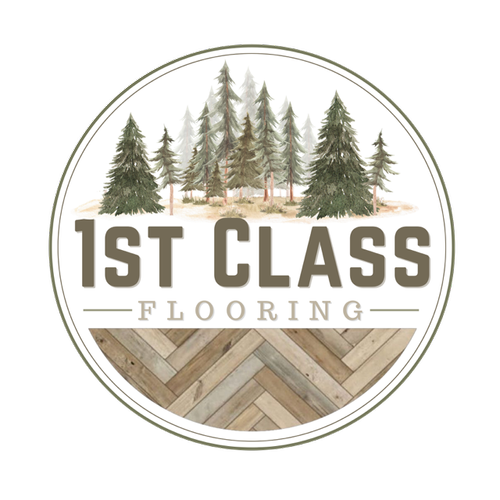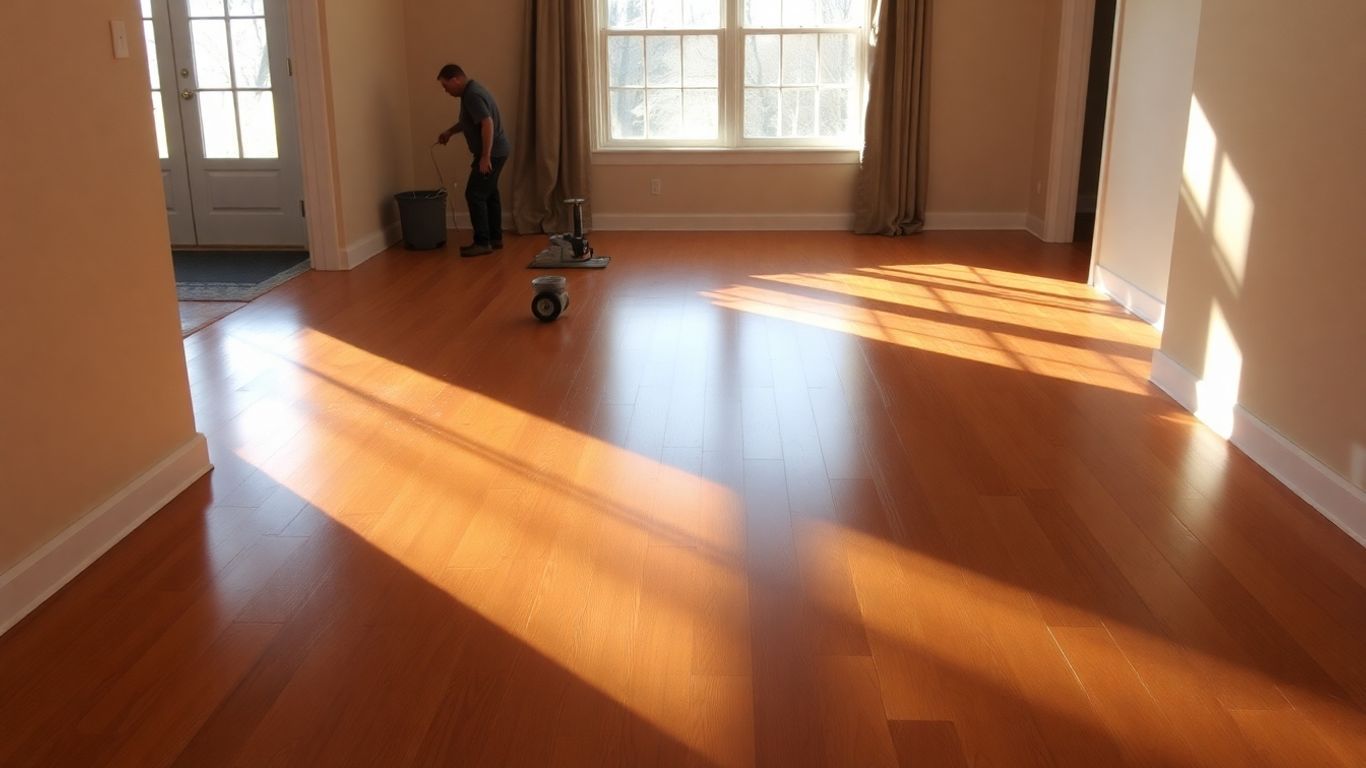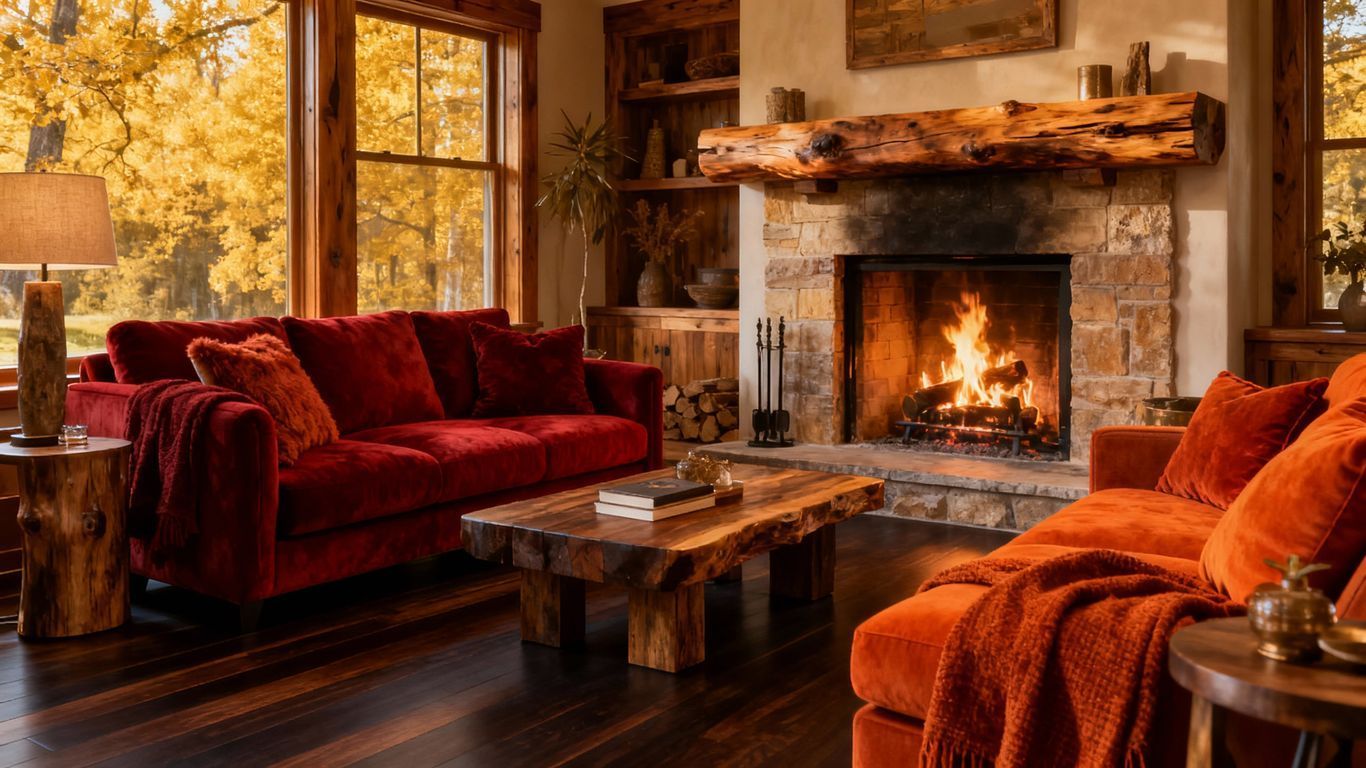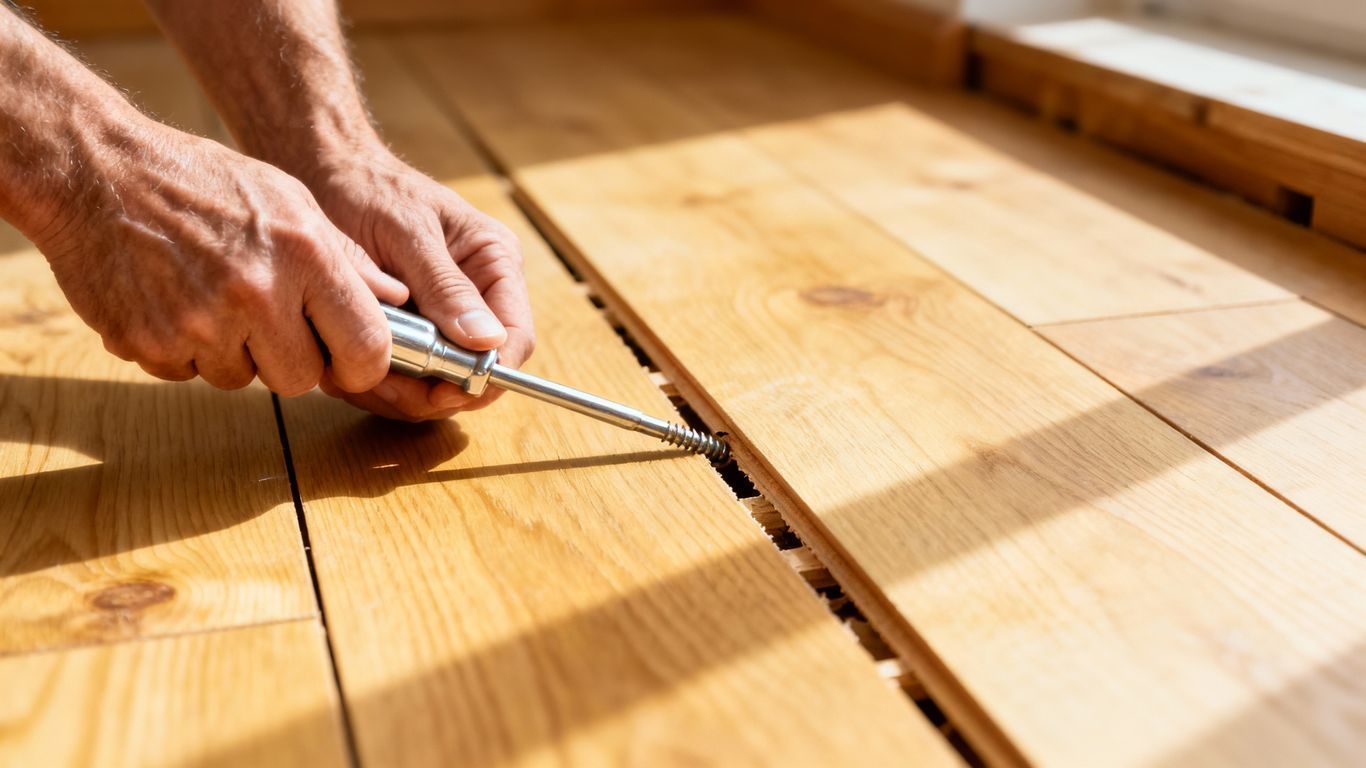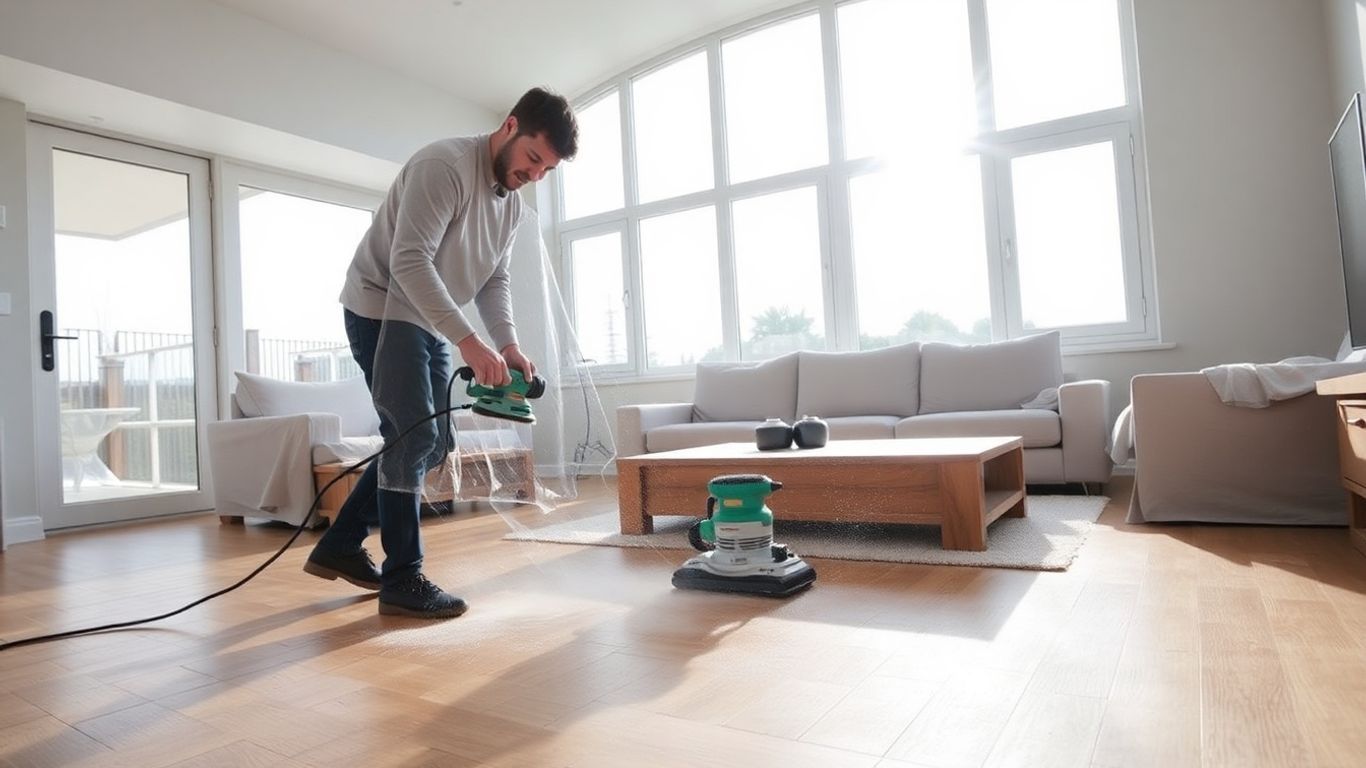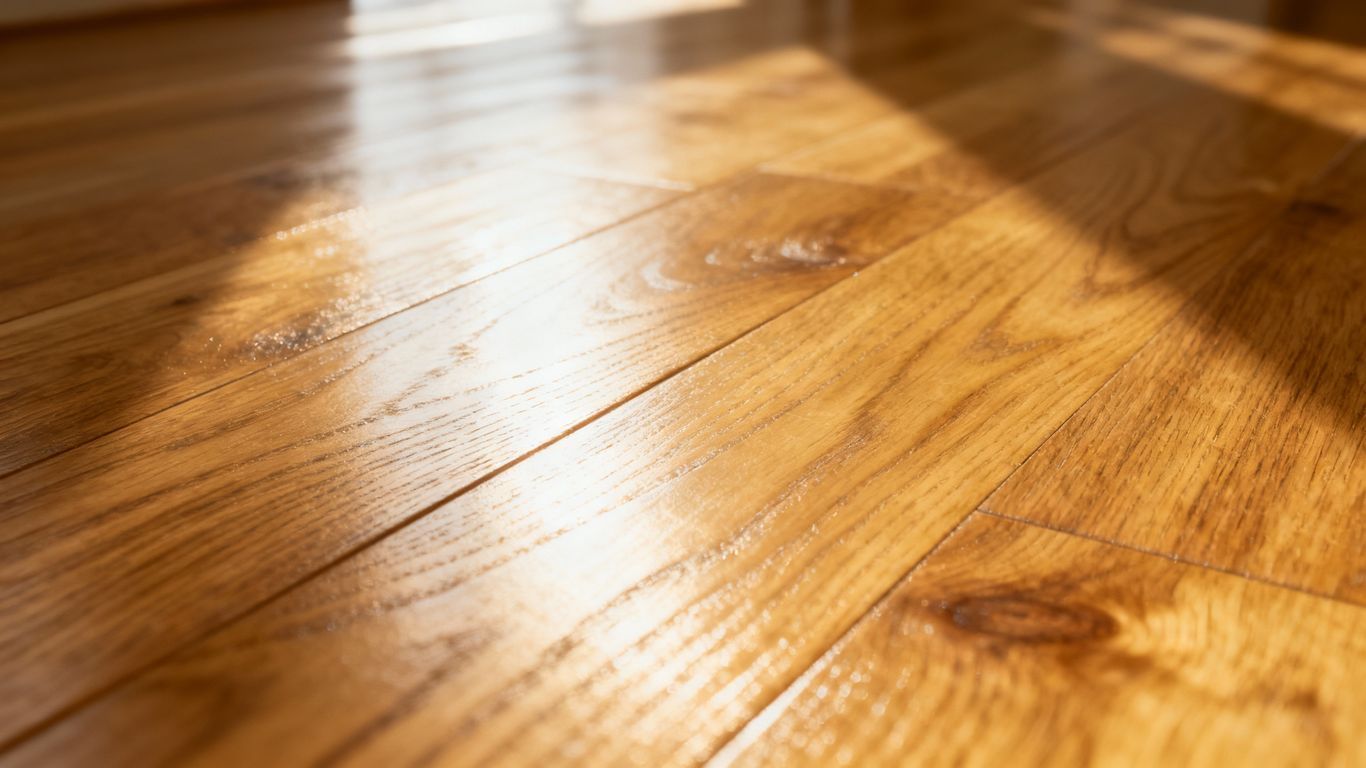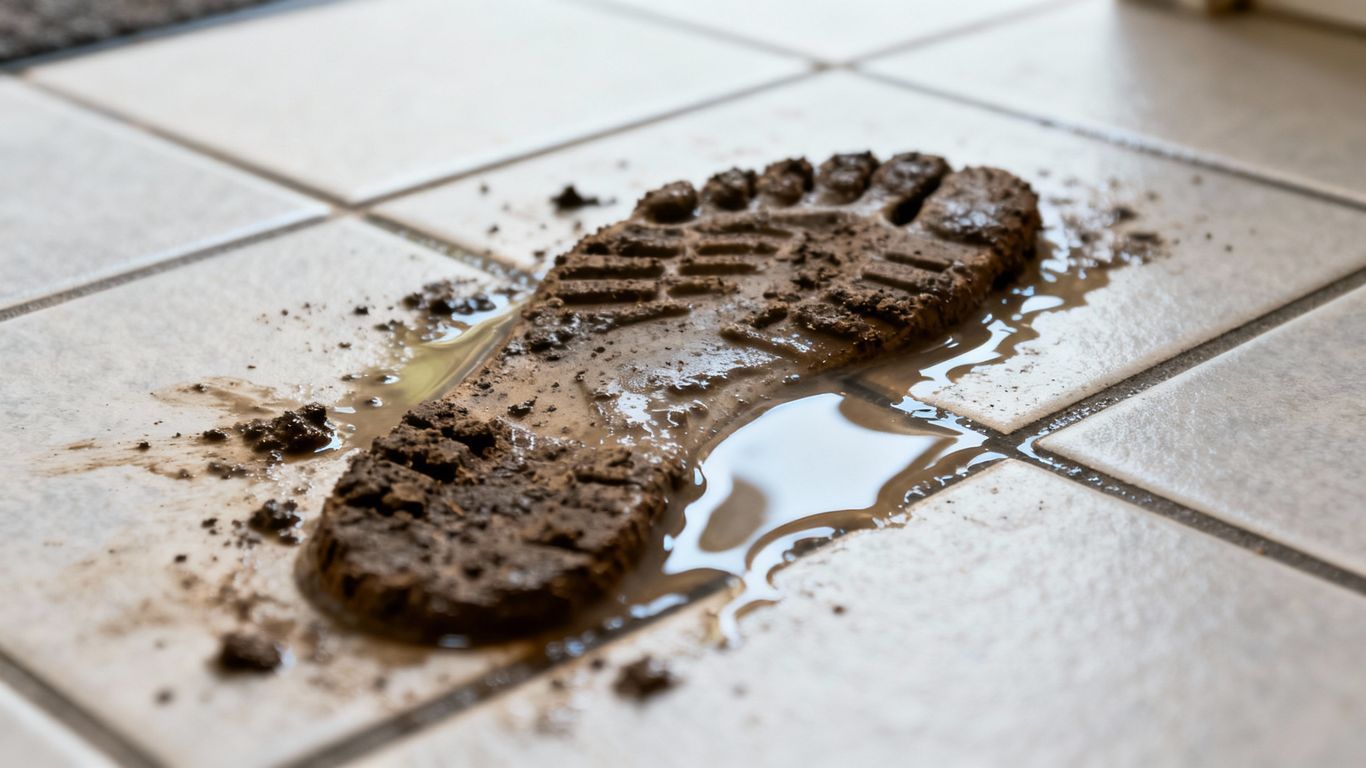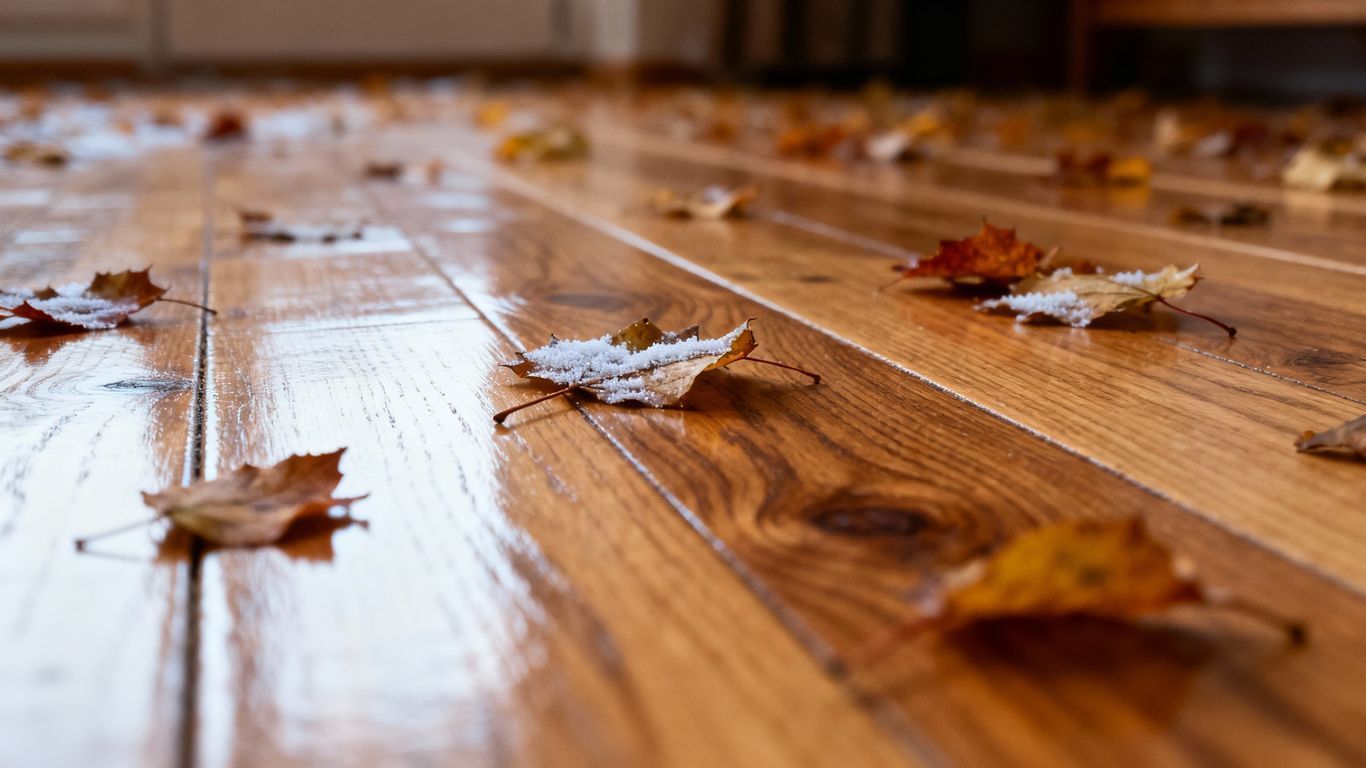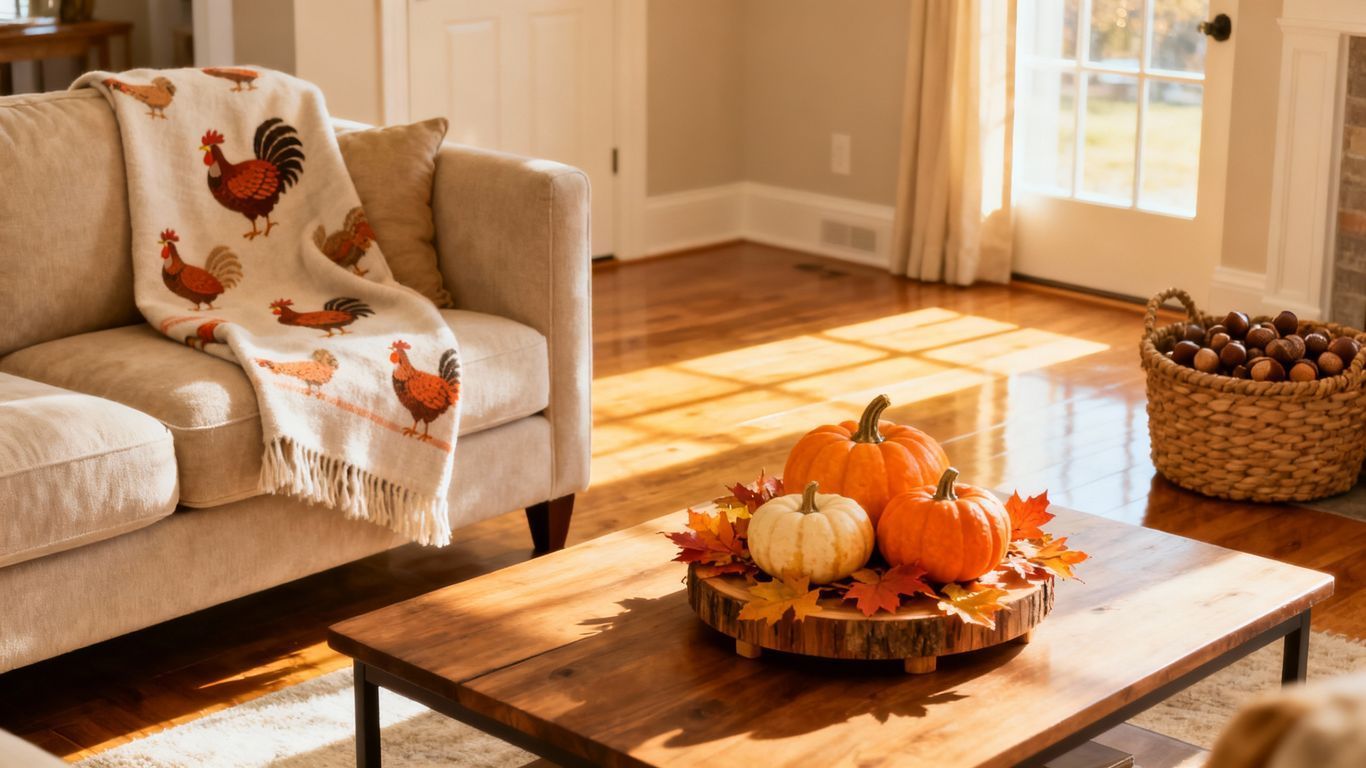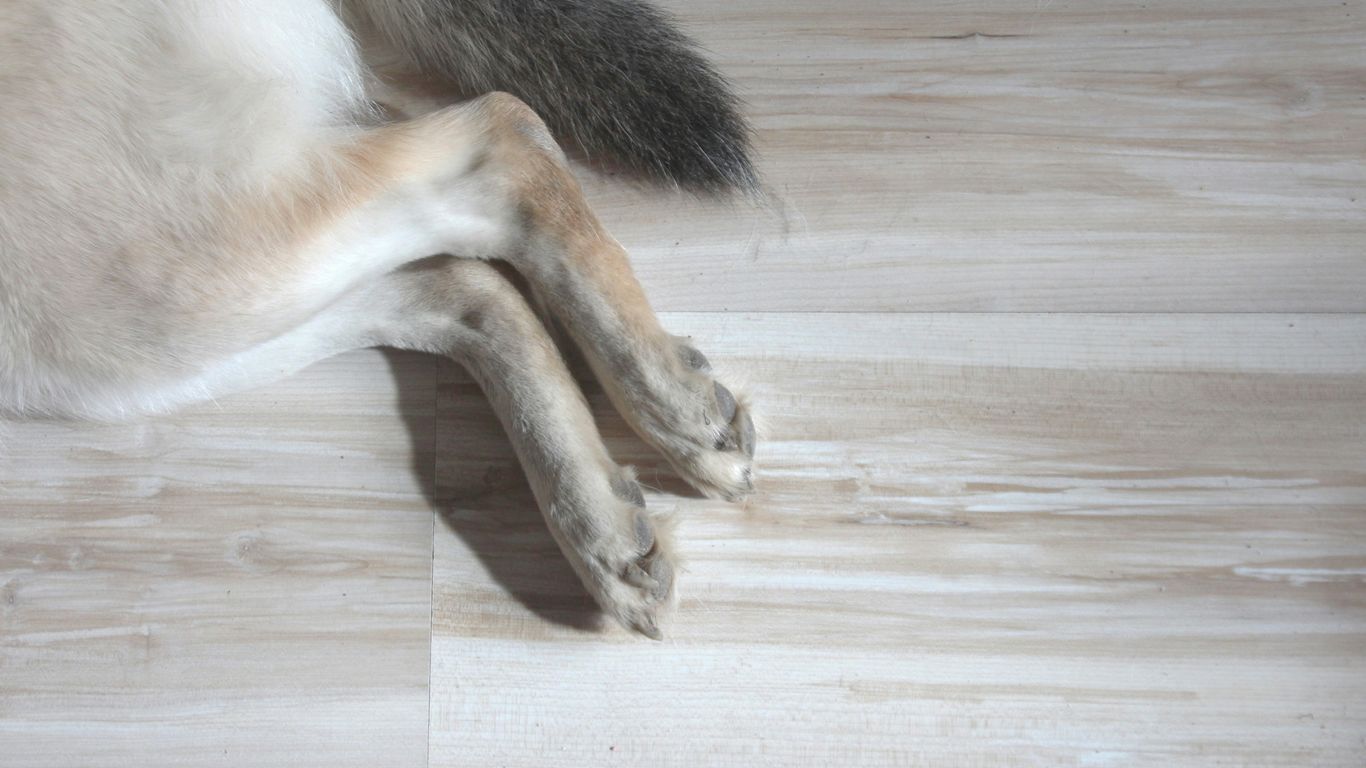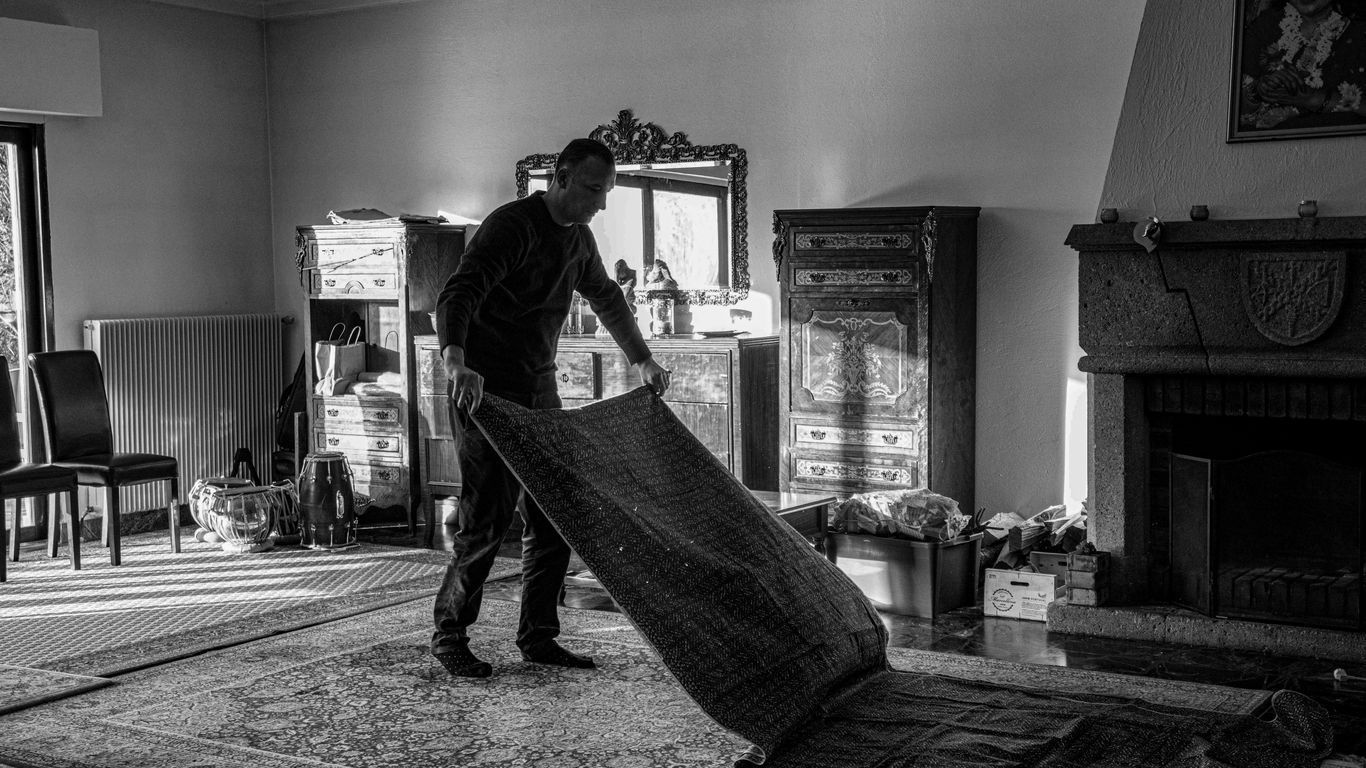Top Flooring Choices for Bright, Airy Homes in Lookout Mountain & Signal Mountain
Living in Lookout Mountain or Signal Mountain means you probably love that bright, open feeling in your home. Choosing the right flooring can really make a difference in how light and airy your space feels. We looked at some popular options that work well for that kind of look, especially if you're thinking about Signal Mountain hardwood flooring. Let's check out some good choices.
Key Takeaways
- Light-colored woods like white oak and maple are great for a bright feel.
- Bamboo and cork flooring in lighter shades also add to an airy atmosphere.
- Porcelain and ceramic tiles in pale colors can make rooms feel larger and brighter.
- Vinyl plank and laminate flooring offer lighter, budget-friendly options.
- Light carpets and concrete can also contribute to a bright, open home design.
1. White Oak Hardwood
When you want a floor that really brightens up a room, white oak hardwood is a fantastic choice. It’s got this natural, light color that just bounces light around, making spaces feel bigger and airier. It’s a classic for a reason, fitting in with so many different decor styles. You get that beautiful wood grain, but in a lighter tone that doesn’t feel heavy or dark. It’s a really popular option for homes in areas like Lookout Mountain and Signal Mountain because it complements the natural surroundings while keeping the interior feeling open and bright. Plus, it’s pretty durable, which is always a good thing, especially if you have pets or kids running around. You can find it in various finishes, from a more natural, matte look to something a bit more polished. It’s a solid investment for a home that feels welcoming and light. Many homes in the area feature this type of flooring, like this beautiful property with its wide-plank white oak floors. It’s a great way to achieve that sought-after bright and airy feel.
2. Maple Hardwood
Maple hardwood is another fantastic option for creating that bright, airy feel in your Lookout Mountain or Signal Mountain home. It’s known for its light, creamy color and subtle grain patterns, which really help reflect light around a room. This makes spaces feel larger and more open, which is exactly what you want when aiming for that airy aesthetic.
Why Choose Maple?
- Light and Bright Appearance: Maple naturally has a pale, almost white to light tan hue. This is a big plus for rooms that don't get a ton of direct sunlight, as it helps bounce what light is available.
- Durability: Don't let its light color fool you; maple is a hard wood. It holds up pretty well to daily wear and tear, making it a practical choice for busy households.
- Versatile Style: The neutral tone of maple works with pretty much any decor style. Whether you're going for modern, farmhouse, or something in between, maple flooring can adapt.
- Smooth Finish: Maple typically has a finer, more uniform grain than some other hardwoods. This gives it a smoother look and feel, which contributes to that clean, uncluttered vibe.
Maple vs. Oak
While white oak is super popular, maple offers a slightly different character. It's generally lighter in color and has a less pronounced grain. If you're after a really minimalist look, maple might be your go-to. It's also a bit harder than red oak, though white oak is comparable in hardness.
Maple flooring can be stained, but its natural light color is often its biggest selling point for bright homes. If you do decide to stain, opt for lighter, natural tones to keep that airy feel. Dark stains will definitely change the whole mood of the room.
Installation and Maintenance
Like other hardwoods, maple can be installed as solid planks or engineered wood. Solid maple is great for areas that stay dry, while engineered maple can be a good choice for basements or areas with more moisture fluctuations. Regular sweeping and occasional damp mopping are usually all that's needed to keep it looking good. Just be mindful of moisture and avoid harsh cleaners, as they can dull the finish or damage the wood over time.
3. Light Bamboo
Light Bamboo
Bamboo flooring has really gained popularity, and for good reason. It's a fantastic option if you're aiming for that bright, airy feel in your Lookout Mountain or Signal Mountain home. It's known for its natural strength and a look that can really open up a room. Plus, it’s a pretty sustainable choice, which is always a nice bonus.
When you're picking out bamboo, you'll find a few different types, but for that light and breezy vibe, you'll want to look for natural or light-stained varieties. It has a unique grain pattern that's different from traditional hardwoods, giving your floors a distinct character. It’s not quite as hard as some hardwoods, so you do need to be a little mindful of scratches, especially in high-traffic areas. Think about using rugs in those spots.
Here’s what makes light bamboo a good fit:
- Appearance: It typically has a light, neutral tone that reflects light well, making spaces feel larger and more open.
- Sustainability: Bamboo is a fast-growing grass, making it a more eco-friendly flooring material compared to some others.
- Maintenance: It’s generally easy to clean with regular sweeping and occasional damp mopping. Just avoid harsh chemicals.
One thing to keep in mind is the quality of the manufacturing. Look for reputable brands that use good adhesives and finishes. This will make a big difference in how well the floor holds up over time and how it looks. It’s worth doing a little research to find a product that’s built to last.
If you're considering bamboo, it's a good idea to see samples in person. The color and grain can vary quite a bit between manufacturers, and you want to make sure it matches the overall aesthetic you're going for. It can be a really beautiful and practical choice for creating that light, welcoming atmosphere you want in your home, kind of like how wind chimes can add a pleasant sound to your porch pleasant sounds.
4. Porcelain Tile
Why Porcelain Tile is a Great Choice
Porcelain tile is a really solid option if you're going for that bright, airy feel in your Lookout Mountain home. It's made from a denser, less porous clay than regular ceramic, which means it's super tough and can handle a lot. This durability makes it perfect for busy households and areas that get a lot of foot traffic. Plus, the way it's manufactured allows for a huge variety of looks, from mimicking natural stone to wood grains, all while keeping that light and open vibe you want. It’s a practical choice for anyone looking for beautiful, long-lasting floors.
Benefits of Porcelain Tile
- Water Resistance: Because it's so dense, porcelain tile absorbs very little water, making it ideal for kitchens, bathrooms, and entryways where spills are common. This low absorption rate also helps prevent staining and makes cleaning a breeze.
- Durability: It's incredibly hard and resistant to chips and scratches. This means your floors will look good for years, even with daily use. It’s a great material for high-traffic areas, and you can find it in many styles suitable for a home on properties like those found on HorseProperties.net.
- Versatility in Style: You can find porcelain tiles that look like almost anything – marble, granite, wood, even concrete. This allows you to achieve a specific aesthetic without the maintenance or cost of the natural materials they imitate.
- Low Maintenance: Spills and dirt don't easily penetrate porcelain, so a simple sweep and mop usually does the trick. It doesn't require sealing like some other natural stone options.
Porcelain tile is a fantastic material for creating a bright and airy atmosphere. Its ability to reflect light, combined with its inherent strength and resistance to moisture, makes it a practical and stylish choice for almost any room in the house. Whether you're aiming for a clean, modern look or something more rustic, porcelain can adapt to your design vision.
Installation Considerations
While porcelain is tough, it can be a bit trickier to install than softer materials. It requires specialized tools for cutting, and the subfloor needs to be very level and stable to prevent cracking. It's often recommended to hire a professional installer to ensure the job is done right, especially for larger areas or intricate patterns. The grout lines can also be a factor in the overall look; thinner grout lines can contribute to a more continuous, airy feel.
5. Light Ceramic Tile
Light ceramic tile is a fantastic option for homes aiming for that bright, airy feel, especially in areas like Lookout Mountain and Signal Mountain where natural light is a big draw. It's a really versatile material that can mimic the look of natural stone or even wood, but with a lot more practicality for everyday living.
Durability and Maintenance
One of the best things about ceramic tile is how tough it is. It holds up really well to foot traffic, which is great if you have kids or pets running around. Plus, cleaning it is usually a breeze. A quick sweep and a mop with some mild cleaner will keep it looking good.
Design Versatility
Ceramic tiles come in just about every color, pattern, and size you can imagine. For a bright and airy look, you'll want to stick with lighter shades like whites, creams, light grays, or soft beiges. These colors reflect light, making rooms feel bigger and more open. You can find them in large format tiles, which means fewer grout lines, giving a cleaner, more expansive appearance.
Considerations for Light Ceramic Tile
- Grout Color: Lighter tiles can show dirt more easily, especially in the grout lines. Choosing a grout color that's a shade or two darker than the tile can help hide minor stains and wear.
- Slip Resistance: Some ceramic tiles can be slippery when wet. Look for tiles with a higher coefficient of friction (COF) rating, especially if you're installing them in bathrooms or kitchens.
- Installation: While durable, ceramic tile installation can be a bit more involved than other flooring types. It requires a flat, stable subfloor and proper adhesive.
Ceramic tile offers a good balance of style and function. Its ability to withstand moisture makes it a popular choice for kitchens and bathrooms, but its clean look also works well in living areas and bedrooms, contributing to that desired light and open atmosphere. It's a solid choice for homeowners who want a floor that’s both beautiful and easy to care for.
Cost-Effectiveness
Compared to some other natural materials, ceramic tile can be quite budget-friendly. You get a lot of style and durability for your money, making it an attractive option for many homeowners.
6. Light Vinyl Plank
What is Light Vinyl Plank Flooring?
Light vinyl plank flooring, often called LVP, is a popular choice for homes aiming for that bright, airy feel. It's made of several layers, with the top layer usually featuring a realistic wood or stone look, printed with high definition. The 'light' part just refers to the color – think pale grays, soft beiges, or even whitewashed wood tones. It's a really practical option, especially if you've got kids or pets running around.
Why Choose Light Vinyl Plank for Your Home?
There are a bunch of reasons why LVP is a good fit for a bright home on Lookout Mountain or Signal Mountain. For starters, it’s super durable and water-resistant, which is a big plus in any home, but especially one that might see a bit of moisture. It’s also pretty forgiving underfoot, making it comfortable to walk on. Plus, the light colors really help bounce natural light around the room, making spaces feel bigger and more open. It’s a great way to get that high-end look without the high-end price tag or the maintenance worries.
- Durability: Resists scratches, dents, and stains.
- Water Resistance: Perfect for kitchens, bathrooms, and entryways.
- Ease of Installation: Many options click together, making DIY projects feasible.
- Aesthetics: Wide variety of light, natural-looking designs.
Installation and Maintenance
Installing light vinyl plank flooring is generally straightforward. Many types come with a click-lock system, meaning you don't necessarily need a lot of special tools or adhesives. You can often lay it right over your existing floor if it's flat and smooth. When it comes to upkeep, it’s a breeze. Regular sweeping or vacuuming is usually all that’s needed. For tougher spots, a damp mop with a mild cleaner works wonders. It’s a low-maintenance material that keeps its good looks.
One of the best things about LVP is how it can mimic the look of real wood or stone without the fuss. You get that natural, light aesthetic that makes a room feel so much more open and welcoming, which is exactly what you want in a home designed to capture those beautiful mountain views. It’s a smart choice for achieving that desired bright and airy atmosphere.
Popular Light Vinyl Plank Styles
When you’re shopping for light vinyl plank, you’ll see a lot of variety. Some popular choices include:
- Whitewashed Oak: Gives a coastal or farmhouse vibe.
- Light Gray Ash: Offers a modern, clean look.
- Natural Maple: A classic, warm, and inviting tone.
- Distressed White: Adds character and a rustic touch.
These styles can really transform a space, making it feel more expansive and filled with light. It’s a fantastic way to update your home, and you can find some great options for Lookout Mountain, TN apartments that feature this flooring.
7. Light Laminate Flooring
Light laminate flooring can be a really smart choice for homes aiming for that bright, airy feel, especially in places like Lookout Mountain and Signal Mountain where natural light is often a big draw. It's a budget-friendly option that mimics the look of real wood or stone without the hefty price tag. Plus, it's pretty tough stuff, which is great if you have kids or pets running around.
When you're picking out laminate, look for lighter shades like pale grays, soft beiges, or even whitewashed looks. These colors really help bounce light around the room, making spaces feel bigger and more open. It's a simple trick, but it works wonders.
Here are a few things to keep in mind with laminate:
- Durability: Most laminate is made with a tough wear layer that resists scratches and fading. It’s a good option for high-traffic areas.
- Maintenance: Cleaning is usually a breeze. A quick sweep or a damp mop is typically all you need. No fancy polishes required!
- Installation: Many laminate floors come with a click-lock system, making DIY installation pretty straightforward. You can often lay it right over your existing floor, saving time and hassle.
One of the best parts about laminate is how versatile it is. You can find styles that look almost exactly like expensive hardwoods or natural stone, giving you a high-end look without breaking the bank. It’s a practical way to get the aesthetic you want for your home.
It’s definitely worth considering if you want that light, open vibe. You can find some really nice options that will make your home feel even more welcoming. Check out some of the beautiful hardwood flooring options available to get a feel for what works well in bright spaces.
8. Light Carpet
While hardwood and tile often get the spotlight for bright homes, don't count out carpet! Especially when you're aiming for that airy feel, a light-colored carpet can really make a space feel warmer and more inviting. Think soft beiges, creamy whites, or even very pale grays. These shades reflect light beautifully, making rooms feel bigger and more open, which is exactly what you want in a bright, airy home.
When choosing a light carpet, consider the material and pile. Some fibers are more stain-resistant than others, which is a big plus for lighter colors. Plus, the texture can add a cozy dimension without darkening the room.
Here are a few things to keep in mind:
- Fiber Type: Look into options like nylon or polyester blends. They tend to hold up well against wear and tear and can be treated for stain resistance.
- Pile Height: Shorter, denser piles are generally easier to clean and less likely to show dirt than longer, looser piles.
- Maintenance: Regular vacuuming is a must, and having a good carpet cleaner on hand for spills can save you a lot of stress.
Choosing a light carpet is a great way to add comfort and softness underfoot. It can really soften the look of a room and make it feel more lived-in, but in a good way. Just be prepared for a little extra attention to keep it looking its best, especially in high-traffic areas.
9. Light Cork Flooring
Light Cork Flooring
Cork is a really interesting material for flooring, especially if you're going for that bright, airy feel in your Lookout Mountain or Signal Mountain home. It's made from the bark of the cork oak tree, which is pretty neat because the tree isn't harmed when the bark is harvested. This makes it a super sustainable choice. When you see light-colored cork, it really opens up a space and reflects light beautifully. It's got this natural, subtle texture that feels good underfoot, and it's surprisingly comfortable. Plus, cork has some great insulating properties, both for sound and temperature, which is a nice bonus.
When you're picking out cork flooring, you'll find a few different types:
- Floating Cork Floors: These are usually planks that click together, making installation a bit simpler, especially for DIYers. They're a good option if you want to put it over an existing floor.
- Glue-Down Cork Tiles: These are adhered directly to the subfloor. They offer a really solid feel and are often used in areas where you might want a bit more stability.
- Engineered Cork: This often has a cork wear layer over a core material, giving you the look and feel of cork with added durability.
One of the best things about cork is its natural cushioning. It's not as hard as tile or even some hardwoods, so it’s easier on your joints. It also has natural antimicrobial properties, which is a plus for keeping things clean. If you're thinking about adding some greenery to your home, maybe even trying some vertical gardening, cork floors can complement that natural vibe really well. It’s a flooring that’s both gentle on the planet and easy on the eyes.
Cork flooring does require a good sealant to protect it from moisture and stains. Regular sweeping and occasional damp mopping are usually enough for upkeep, but it’s wise to avoid harsh chemicals. It’s a material that rewards gentle care with a long lifespan.
10. Light Concrete
Light Concrete
Concrete floors have really made a comeback, and for good reason. They give off this cool, modern vibe that works surprisingly well in homes aiming for that bright, airy feel, especially if you're going for a more contemporary look. When polished and sealed correctly, light concrete can reflect a lot of natural light, making your rooms feel much bigger and more open. It’s a really durable option, too, which is great for busy households. Plus, it’s pretty low maintenance once it’s all set up.
When you're thinking about concrete for your floors, especially in a place like Lookout Mountain or Signal Mountain where the environment can be a factor, consider these points:
- Finish: You can go for a polished finish, which is super smooth and reflective, or a more honed finish that’s a bit less shiny but still very clean. There are also stamped or textured options if you want a bit more visual interest.
- Color: While we're talking about light concrete, you can actually achieve a range of lighter shades by using specific mixes or adding pigments during the pouring process. This helps avoid that stark gray look if it’s not your style.
- Sealing: This is super important. A good sealant protects the concrete from stains and moisture, which is key for keeping it looking good and easy to clean. It also helps maintain that bright appearance.
It’s a flooring choice that’s built to last and can handle a lot of foot traffic without showing wear and tear easily. It’s also a great base if you ever decide to add area rugs for warmth or pops of color. Many contemporary homes are designed with these kinds of resilient materials in mind, aiming for that resort-like atmosphere contemporary homes.
You might think concrete sounds cold, but with radiant heating systems installed underneath, it can be incredibly cozy underfoot, even during cooler months. It’s a practical choice that doesn’t sacrifice comfort.
Section 10 talks about light concrete. It's a material that's easy to work with and can be used in many ways. If you're interested in learning more about different types of concrete and how they can be used for your projects, check out our website for more details and expert advice.
Bringing the Light In
So, picking the right floors can really make a difference, especially with all that gorgeous natural light we get here on Lookout and Signal Mountains. Whether you lean towards the classic look of hardwood, the easy care of LVP, or the natural feel of cork, there's a great option out there. Think about how you use your space and what look you're going for. Getting the flooring right helps make your home feel even more open and bright. It’s a big decision, but with these choices, you can really make your home shine.
Frequently Asked Questions
What are the best flooring types for making a home feel bright and open?
For bright and airy homes, light-colored flooring like white oak, maple, or light bamboo works best. These colors reflect more light, making spaces feel larger and more open. Lighter tiles and vinyl planks also do a great job of keeping things bright.
Why are white oak and maple good options for bright homes?
White oak and maple are popular choices because they have a natural, light color that brightens up rooms. They're also durable and look great in many different home styles, especially in areas like Lookout Mountain and Signal Mountain where nature is a big part of the scenery.
Is light vinyl plank flooring a good choice for a bright home?
Yes, light-colored vinyl plank flooring is a fantastic option. It's known for being tough, waterproof, and easy to clean, which is perfect for busy households. Plus, it can mimic the look of real wood without the high cost or maintenance.
Are tiles a good fit for bright, airy interiors?
Porcelain and ceramic tiles, especially in lighter shades like white, beige, or light gray, are excellent for bright spaces. They're super durable, water-resistant, and easy to maintain, making them ideal for kitchens and bathrooms.
Can laminate and carpet also help make a home feel bright?
Laminate and carpet in lighter colors can also contribute to a bright atmosphere. Laminate is budget-friendly and comes in many styles that look like wood. Light carpet adds warmth and softness underfoot, making living areas feel cozy and inviting.
What's the main thing to remember when picking flooring for a bright, airy house?
When choosing flooring for a bright home, think about how much light the color reflects. Lighter, neutral tones generally perform best. Also, consider the material's durability and how easy it is to clean, especially in busy areas.
